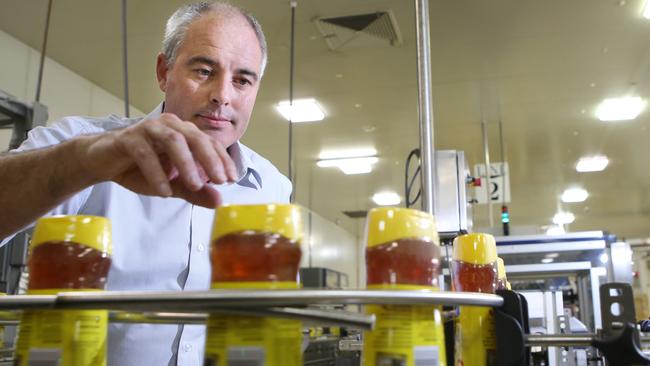Happy bee keepers key to Capilano’s huge growth
Ben McKee comes from five generations of bee keepers and has been managing director since Capilano listed on the ASX.

QLD Business
Don't miss out on the headlines from QLD Business. Followed categories will be added to My News.
CAPILANO has been preparing for this moment since 1953, when two brothers founded a co-operative to sell the honey of its bee keeper owners. Today, Australia’s largest packager and retailer of honey is attacking the fast growing giant Chinese, North American and Middle East export markets. And it’s taking market share from Australia’s supermarket giants’ home brand products.
Consumers are hunting for more natural products in their diet, and Capilano (ASX code CZZ) has the capacity to service the growing market. The question is, does it have the supply?
Since the company emerged out of its co-op cocoon when it listed on the ASX in July 2012 at an opening price of $2.15, its rise has been spectacular. Its stock now trades at $19.60.
Behind this meteoric rise are strong fundamentals and last year profits more than doubled. Its current share price is factoring in more growth, and not surprisingly a key player in the Capilano story is confident of this continuing.
Ben McKee comes from five generations of bee keepers and has been managing director since Capilano listed on the ASX. His confidence stems form the 500 or so bee keepers on the company’s books: “We have a lot of the honey supply because we deliver a market-leading honey price to our bee keepers. That’s our biggest protection: keeping our bee keepers happy.”
The honey crop starts in Spring and peak production is in Summer.
It is a surprise that El Nino isn’t having much of an effect. After all, weather is a big factor in whether the bees come out. If it is too cold and there is less rain, that’s not good, and as a result McKee says that honey volumes are down in Victoria. Although in Queensland, where the company is based, conditions are good, albeit peak production is still to come.
McKee says that production should be in line with last year’s 9,265 tonnes, which would be a positive. In 2014 when we first tipped Capilano, its shares were trading at $5.30. The company had just come through a particularly poor crop of 7,744 tonnes. Capilano was able to exploit the lack of supply to its advantage, increasing its market share from 50 per cent to about 70 per cent.
The company exports about a quarter of its product and intends to maintain this market because its value is increasing with a lower Australian dollar. Meanwhile, total Australian consumption is around 12,000 tonnes. Some of the difference is imported from Argentina and is then blended with Australian product and consumed via its Allowrie brand. I cannot taste the difference between Allowrie and its eponymous brand.
The big profit driver continues to be diverting honey stocks from industrial uses towards branded consumption, although there is less opportunity to do this than in the past. We are keen holders at current levels but our appetite has diminished.
Richard Hemming (r.hemming@undertheradarreport.com.au) is an independent analyst who edits www.undertheradarreport.com.au, focusing on small cap companies. This column is general information and readers should seek their own investment advice.


